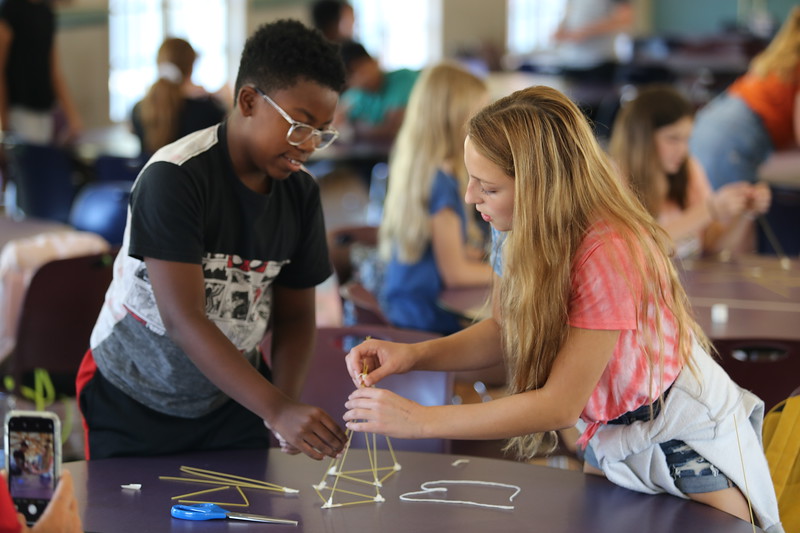(Feb 19-22)Thursday, February 21, 2018
Today (Thu 2/21) in Quest Science, section 7x has been looking at different types of technology and energy. We read an article titled Built for Thrills. We learned how engineers design roller coasters along with all of the things that they need to consider. They have to consider safety above all. The second article was titled 30 Years of Super Science. We read of different types of technology created for different reasons. We read about the Hubble Space Telescope, Virtual Reality games, and 3D printers. Next, we completed a worksheet where we had to pick one of the three types of technology and answer the questions. We needed to look up why it was created, who created it, how the original version worked, what improvements were made and why, and how has it helped people. Here are some quotes from the students of what they have learned:
“I did the 3D printer. I learned that it was originally made for companies to make prototypes,” says Maggie.
“I chose the Hubble Space Telescope because I never heard of it before. Besides finding out what it was, I also learned how it works,” says Katherine.
In Mr. Greenberg classes, section 7y were introduced Socratic method. The Socratic method is an argumentative discussion which individuals use critical thinking on certain topics based on evidence. We pitch different ideas and points of view on the subject and ask questions and queries. We set norms and guidelines for the Socratic method and came up with a class set of goals for each Socratic discussion class. Some examples of Socratic discussion norms are be engaged with the material, avoid repetition, let others have a chance to speak, and takes notes of some questions you have about the discussion or topic. We decided to have a different class goal and personal goal every time to focus on during the discussion so we can improve our efficiency and clarity in the discussion. We read an article that focused on slow reading and not skimming through reading. We annotated the article and took notes on key points. We had a Socratic discussion on the article. We use the fishbowl method. This is when a few people go in the middle of a larger circle and discuss a topic and majority of the people observe from the outside of the discussion circle and take notes on the discussion and give feedback on discussion after the discussion is over.
Semicolons and Selecting Book Genres
In Quest Humanities with Mr. Gornto, we started a new unit in our grammar books. We are beginning to learn about semicolons, and when to use them. It will be a very difficult unit, but semicolons are very important when writing. Besides focusing on our grammar books, we also are starting to read books following the genre we chose next week. We have different genres of books and chose our top three favorite choices. Then, we will be divided into groups for each genre that we chose, and choose a book will like to read. We are going to create due dates individually for ourselves, and make sure everyone has a responsibility for the project so we won’t fall behind. After reading our books, we will have to write an essay explaining the main theme or themes of the story, and will have two other projects soon, covering different things about the story our group read. It was a very short week for us because of the snow days, but we got a lot done in both Quest Humanities and Quest Science. – Jayden
After we select our genre, we will be able to select a book from the library or from home, as long as it follows the genre and is appropriate.
Proofreaders: Maggie, Katherine
